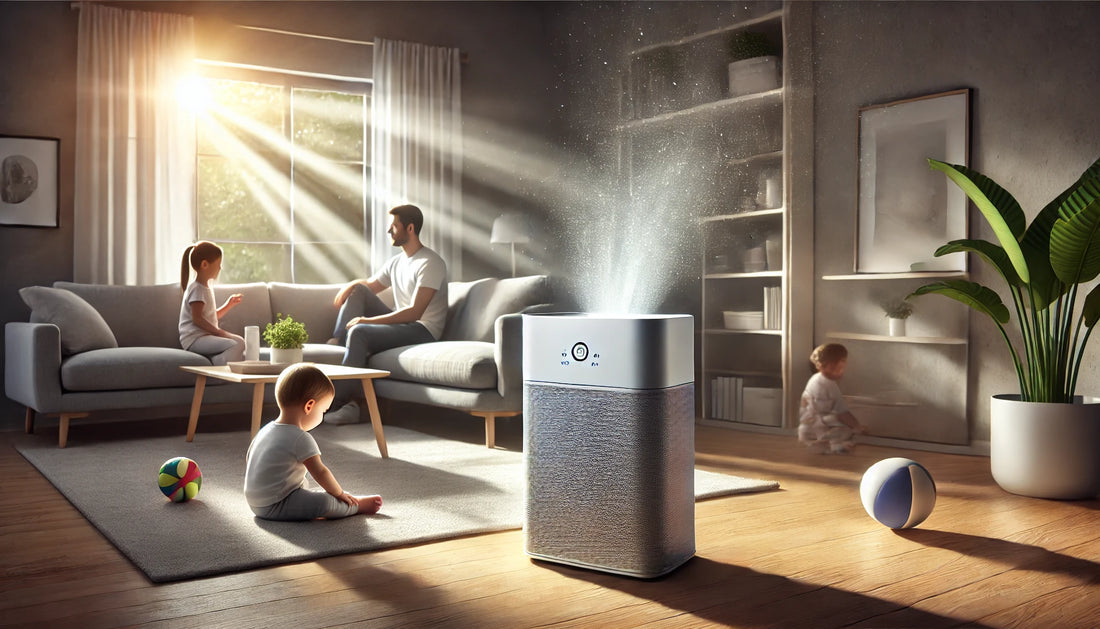HEPA filters and air purifiers have gained immense popularity in recent years, particularly for improving indoor air quality in homes, offices, and healthcare settings. With increasing awareness about pollution, allergens, and airborne pathogens, more people are investing in air purifiers. However, questions about their safety have also emerged. Are these devices safe to use? This article delves into the safety of HEPA filters and different types of air purifiers, addressing common concerns and myths.
What Are HEPA Filters and How Do They Work?
(High-Efficiency Particulate Air) filters are highly efficient at capturing particles such as dust, pollen, mold spores, and pet dander, removing at least 99.97% of particles that are 0.3 microns or larger. HEPA filters work by forcing air through a fine mesh that traps harmful particles. These filters are used in a variety of settings, including homes, hospitals, and industrial spaces, where clean air is a priority.
What Are Air Purifiers and How Do They Work?
Air purifiers come in various types, including HEPA-based purifiers, activated carbon filters, ionizers, and UV-C light purifiers. These devices use different mechanisms to clean the air, such as:
- Filtration (used by HEPA filters) to trap particles.
- Adsorption (used by activated carbon filters) to remove odors and chemicals.
- Ionization (used by ionizers) to charge particles, causing them to stick to surfaces or other particles.
- Photocatalytic oxidation (used in some advanced models) to break down contaminants chemically.
Each type of purifier has its strengths and weaknesses, and their applications range from homes to industrial environments. Many consumers invest in these devices to alleviate symptoms of allergies, asthma, and respiratory issues.
Safety of HEPA Filters
HEPA filters are widely regarded as safe and effective in improving indoor air quality. Since they do not produce harmful byproducts like ozone, they are particularly favored for use in households and hospitals. Some concerns about particle release during filter replacement have been raised, but following proper maintenance and replacement guidelines mitigates this risk. Regularly changing filters as recommended by the manufacturer ensures that the air purifier continues to function optimally and safely.
Safety of Different Types of Air Purifiers
- HEPA-Based Purifiers: These purifiers are safe and highly effective at removing particulate matter without emitting any harmful substances.
- Activated Carbon Filters: These filters are effective at removing odors and volatile organic compounds (VOCs), making them safe for general use.
- Ionizers and Ozone Generators: Ionizers release charged particles into the air, which can potentially create ozone as a byproduct. While ionizers are relatively safe at low emission levels, ozone generators are generally not recommended for home use due to the health risks posed by ozone, which can irritate the lungs and exacerbate respiratory problems.
- UV-C Light Purifiers: UV-C purifiers use ultraviolet light to kill bacteria and viruses. While effective, direct exposure to UV-C light can be hazardous. As long as these purifiers are properly enclosed and maintained, they are safe to use.
Potential Risks and Concerns with Air Purifiers
The main concerns surrounding air purifiers include ozone emission (from ionizers), off-gassing from plastic components, and electrical safety. Ensuring that the air purifier is certified by relevant regulatory bodies such as CARB (California Air Resources Board) for low or zero ozone emissions can minimize these risks. Additionally, checking for product certifications like UL (Underwriters Laboratories) guarantees that the device meets safety standards.
Common Misconceptions About Air Purifier Safety
A common myth is that air purifiers create an unhealthy indoor environment by stripping the air of essential elements, but this is false. Purifiers, especially those with HEPA filters, remove only harmful particles, leaving beneficial gases like oxygen and nitrogen intact. Similarly, many people believe that air purifiers generate harmful byproducts, but only certain types, like ozone generators, pose this risk. Understanding the type of purifier and its safety certifications is key to making an informed purchase.
Guidelines for Safe Use of Air Purifiers and HEPA Filters
To ensure safe and effective use, consider the following:
- Choosing a Certified Product: Look for certifications such as CARB for ozone safety and UL for electrical safety.
- Proper Placement: Position the air purifier in areas where it can circulate air effectively, avoiding obstructions like furniture.
- Regular Maintenance: Replace filters as instructed by the manufacturer to prevent particle release and ensure optimal performance.
Incorporating wearable air purifiers like Hari Hats can add an extra layer of protection, especially for individuals exposed to high pollution levels during outdoor activities. Hari Hats offer personal air filtration, providing clean air directly to the wearer while maintaining the comfort and convenience of a portable device. Combining traditional air purifiers with wearable solutions ensures comprehensive protection against pollutants both indoors and outdoors.
For more information on Hari Hats and their innovative approach to personal air purification, visit harihats.com.
Conclusion
HEPA filters and air purifiers, when properly used, are safe and effective tools for improving indoor air quality. While some types of purifiers, such as ionizers and ozone generators, may pose risks if not used correctly, HEPA-based air purifiers remain a trusted and safe option for homes, offices, and hospitals. Understanding the different types of air purifiers and adhering to safe use guidelines ensures that you can enjoy the benefits of cleaner, healthier air.
Also Read
